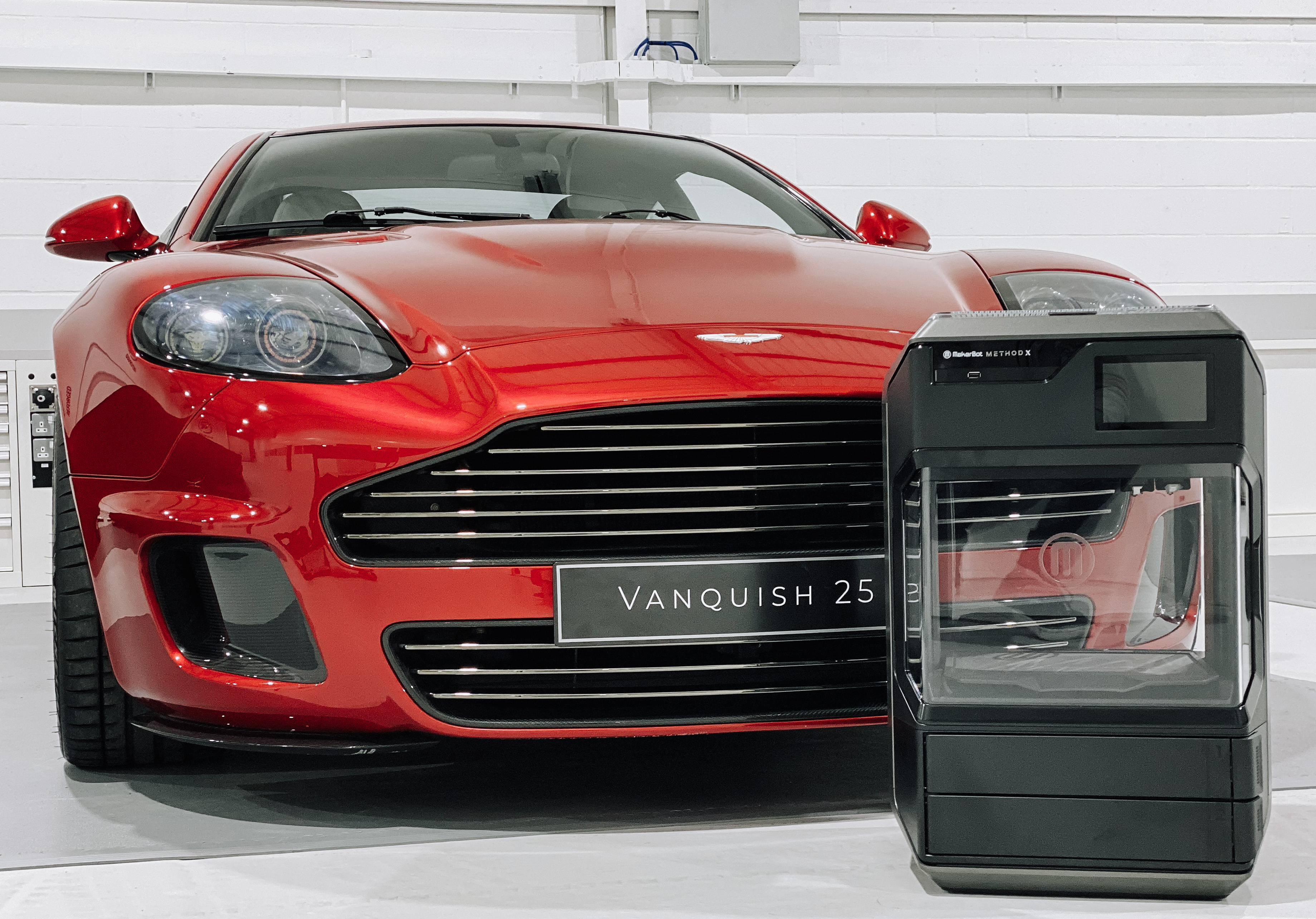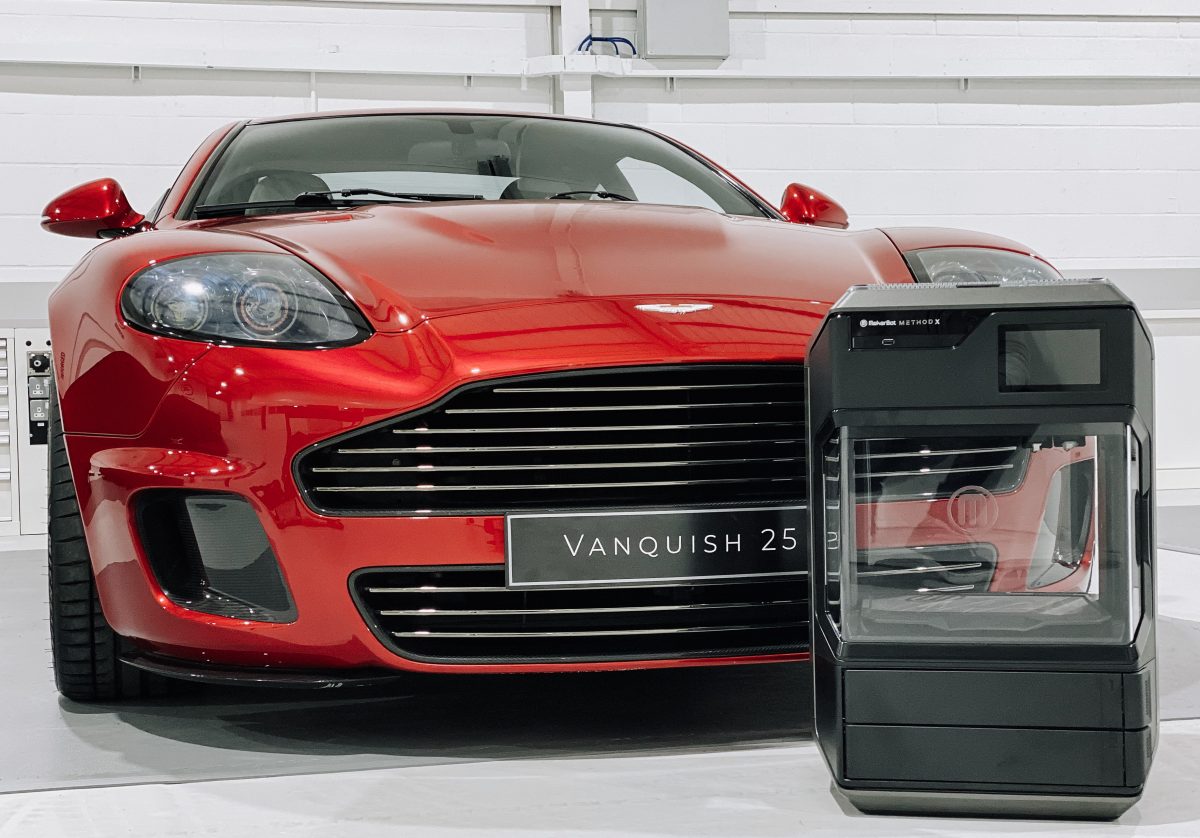Product engineering firm CALLUM has adopted Stratasys subsidiary Makerbot’s METHOD X 3D printer to fabricate parts for a limited edition Aston Martin supercar.
Acquiring the system has enabled the company to 3D print prototypes, tooling and low-volumes of components for R-Reforged’s Aston re-imagining, the ‘Vanquish 25.’ Additionally, using the Makerbot machine, CALLUM can now create custom parts on-demand, eliminating the cost and lead times of ordering them externally.
“The [METHOD’s] level of part accuracy and the diversity of engineering-grade materials available is second to none,” said Adam Donfrancesco, Technical Director of CALLUM. “We can also optimize the production of tools and end-use parts where 3D printing previously fell short in terms of strength, surface finish and accuracy.”
Innovating within automotive design
Since automotive designer Ian Callum founded his namesake company in 2019, it has become a specialist in creating one-off bespoke high-end products. The firm’s innovative production approach has led it to embrace contrasting technologies, including opening its own leather trim shop, while 3D printing concept models.
Having designed the Ford Puma, Jaguar I-PACE and the original Vanquish, automobile architect Ian Callum agreed to develop R-Reforged’s revamp last year. The company’s first public project aimed to transform the much-loved classic car into a more modern GT, that features over 350 engineering upgrades.
In order to fabricate the necessary parts for 25 limited edition vehicles at its Warwick facility, CALLUM opted to upgrade its production capabilities, by adopting the METHOD X. According to Ian Callum, who acts as the firm’s Design Director, the machines could now enable it to “push the boundaries of automotive design.”
“Versatile machines such as METHOD X offer a way to enhance craftsmanship and find new, efficient means to solve design, manufacture and production challenges,” said Callum. “As the world looks for more personalization and bespoke products, CALLUM is now better placed to support its designers and, ultimately, its customers.”

Renovating a modern classic
Although CALLUM has printed models before, with the new Vanquish, it’s expanding on its application of the technology to create end-use components and tooling as well. Using the flexibility of the METHOD X, the firm is able to fabricate customized parts, and the new Aston features additive brake ducts as well as limited edition gauges.
The machine’s enclosed chamber and excellent material compatibility could also make it ideal for printing complex end-use parts. For instance, these features allow CALLUM’s engineers to create components in a matter of hours rather than days, which enables them to take more design risks and accelerate production.
Overall, having found the METHOD X to be a cost-effective alternative to outsourcing, the firm intends to 3D print more parts within its future automobile projects. Commenting on the new supercar, Makerbot CEO Nadav Goshen described it as an “exciting” application, that could yield “next-generation vehicles.”
“METHOD X’s heated enclosure and rapidly expanding materials portfolio continue to open up industrial-grade production to a much wider range of applications,” said Goshen. “Over the past couple of years, we have driven material innovation, and we are excited that CALLUM will put its advanced capabilities to the test.”
Optimizing automotive production
Some of the automotive industry’s biggest brands have turned to 3D printing in recent years, as a means of creating enhanced end-use parts.
Researchers from the Fraunhofer IAPT, have worked with engineers from Fiat Chrysler Automobiles (FCA) to 3D print an enhanced suspension part for one of its cars. Using additive manufacturing, the team were able to integrate the vehicle’s brake caliper into its wheel carrier, cutting its production costs and lead times.
Porsche, meanwhile, has worked with machine tool producer TRUMPF and automotive parts company MAHLE to 3D print pistons for the engine of its 911 supercar. By fabricating the piston with a cooling duct inside its ‘crown,’ the engineers were able to increase the car’s overall power output by 30 BHP.
AM consultancy and Scalmalloy producer APWORKS has also utilized its expertise to produce an optimized automotive part, by 3D printing a titanium exhaust pipe for the Bugatti Chiron. The enhanced component weighed 50kg less than usual, and featured a higher level of temperature resistance.
To stay up to date with the latest 3D printing news, don’t forget to subscribe to the 3D Printing Industry newsletter or follow us on Twitter or liking our page on Facebook.
Are you looking for a job in the additive manufacturing industry? Visit 3D Printing Jobs for a selection of roles in the industry.
Featured image shows Makerbot’s METHOD X 3D printer next to the R-Reforged Aston Martin CALLUM 25 supercar. Photo via Makerbot.
